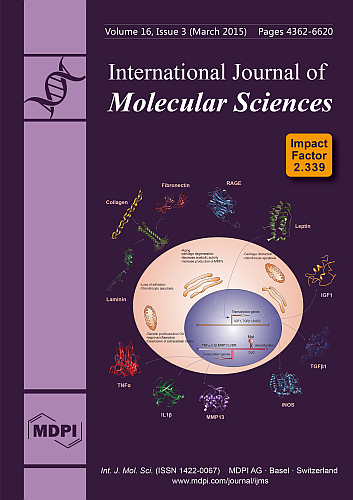Open AccessArticle
MiR-25 Protects Cardiomyocytes against Oxidative Damage by Targeting the Mitochondrial Calcium Uniporter
by
Lei Pan 1,2,3,4,†, Bi-Jun Huang 1,3,4,†, Xiu-E Ma 1,4,†, Shi-Yi Wang 1,4,†, Jing Feng 1,4, Fei Lv 1,4, Yuan Liu 1,4, Yi Liu 1,2,3, Chang-Ming Li 1,4, Dan-Dan Liang 1,2,3, Jun Li 1,2,3,4, Liang Xu 1,2,3,* and Yi-Han Chen 1,2,3,4,5,*
1
Key Laboratory of Arrhythmias of the Ministry of Education of China, East Hospital, Tongji University School of Medicine, Shanghai 200120, China
2
Research Center for Translational Medicine, East Hospital, Tongji University School of Medicine, Shanghai 200120, China
3
Institute of Medical Genetics, Tongji University, Shanghai 200092, China
4
Department of Cardiology, East Hospital, Tongji University School of Medicine, Shanghai 200120, China
5
Department of Pathology and Pathophysiology, Tongji University School of Medicine, Shanghai 200092, China
†
These authors contributed equally to this work.
Cited by 80 | Viewed by 8062
Abstract
MicroRNAs (miRNAs) are a class of small non-coding RNAs, whose expression levels vary in different cell types and tissues. Emerging evidence indicates that tissue-specific and -enriched miRNAs are closely associated with cellular development and stress responses in their tissues. MiR-25 has been documented
[...] Read more.
MicroRNAs (miRNAs) are a class of small non-coding RNAs, whose expression levels vary in different cell types and tissues. Emerging evidence indicates that tissue-specific and -enriched miRNAs are closely associated with cellular development and stress responses in their tissues. MiR-25 has been documented to be abundant in cardiomyocytes, but its function in the heart remains unknown. Here, we report that miR-25 can protect cardiomyocytes against oxidative damage by down-regulating mitochondrial calcium uniporter (MCU). MiR-25 was markedly elevated in response to oxidative stimulation in cardiomyocytes. Further overexpression of miR-25 protected cardiomyocytes against oxidative damage by inactivating the mitochondrial apoptosis pathway. MCU was identified as a potential target of miR-25 by bioinformatical analysis. MCU mRNA level was reversely correlated with miR-25 under the exposure of H
2O
2, and MCU protein level was largely decreased by miR-25 overexpression. The luciferase reporter assay confirmed that miR-25 bound directly to the 3' untranslated region (UTR) of MCU mRNA. MiR-25 significantly decreased H
2O
2-induced elevation of mitochondrial Ca
2+ concentration, which is likely to be the result of decreased activity of MCU. We conclude that miR-25 targets MCU to protect cardiomyocytes against oxidative damages. This finding provides novel insights into the involvement of miRNAs in oxidative stress in cardiomyocytes.
Full article
►▼
Show Figures






